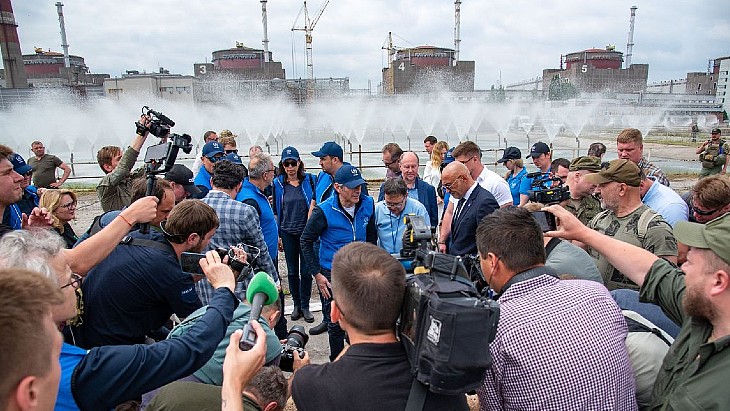
For the past four months the six-unit Ukrainian nuclear power plant, which has been under Russian military control since early March last year, has relied on a single 750kV line for the external power it requires for its safety functions. When this connection has been lost, the plant has had to rely on emergency diesel-powered backup generators.
IAEA Director General Rafael Mariano Grossi welcomed the reconnection of the second line but said: "While the reconnection of the back-up power line is positive, the plant’s external power situation remains highly vulnerable, underlining the precarious nuclear safety and security situation at the site."
Before the war, the plant had four 750kV power lines and had a total of six back-up power lines.
According to the IAEA, the restored back-up power line lost connection on 1 March after damage "on the other side of the Dnipro River ... work to reconnect the power line had been hampered by the difficult security situation".
Meanwhile, on Friday, the IAEA's Grossi said that they were aware of reports of "mines and explosive placed in and around" the plant and said: "We take all such reports very seriously and I have instructed our experts at the site to look into this matter and request the access they need for doing their job. Until now they have not observed any mines or other explosives. Further access will still be needed."
He also provided an update on the situation with cooling water for the plant, in the wake of the damage to the Kakhovka dam on 6 June, which led to a drop in the level of the reservoir which is used to replenish the cooling ponds at the plant. He said that, since the breach of the dam, the plant has been replying on separate reserves of water held near the site, including the nearby Zaporizhzhia Thermal Power Plant's (ZTPP) discharge channel.
Grossi said the plant's six reactors - five shutdown and unit 5 in 'hot' shutdown, where it produces heat for the plant site and neighbouring town - are cooled using the water system which is being replenished "with underground water pumped from the site's drainage system". The IAEA said it was aware that the Ukraine nuclear regulator had made changes to the licences, saying unit 5 needed to be put into cold shutdown, given the water supply situation.
The plant's other water needs are now being met by the cooling ponds, after a switch from using the thermal power plant's discharge channel. The cooling pond's water level is just over 16.5 metres although it is declining by about 1cm per day "due to usage and evaporation". The inlet channel, which used to be connected to the reservoir, has become too low for the normal circulation pumps to transfer water to the discharge channel, but the plan now is to use "smaller submersible pumps to access water from this inlet channel and refill the ZTPP discharge channel, whose level had been falling by 10cm per day until the plant started using the cooling pond". The plant has also brought in measures to reduce all non-essential water use.
Grossi said: "Even though the site currently has sufficient water reserves for some months, the plant needs to act already now to ensure sufficient water for the longer term. The plant is working to address this issue, but it is a complex undertaking."